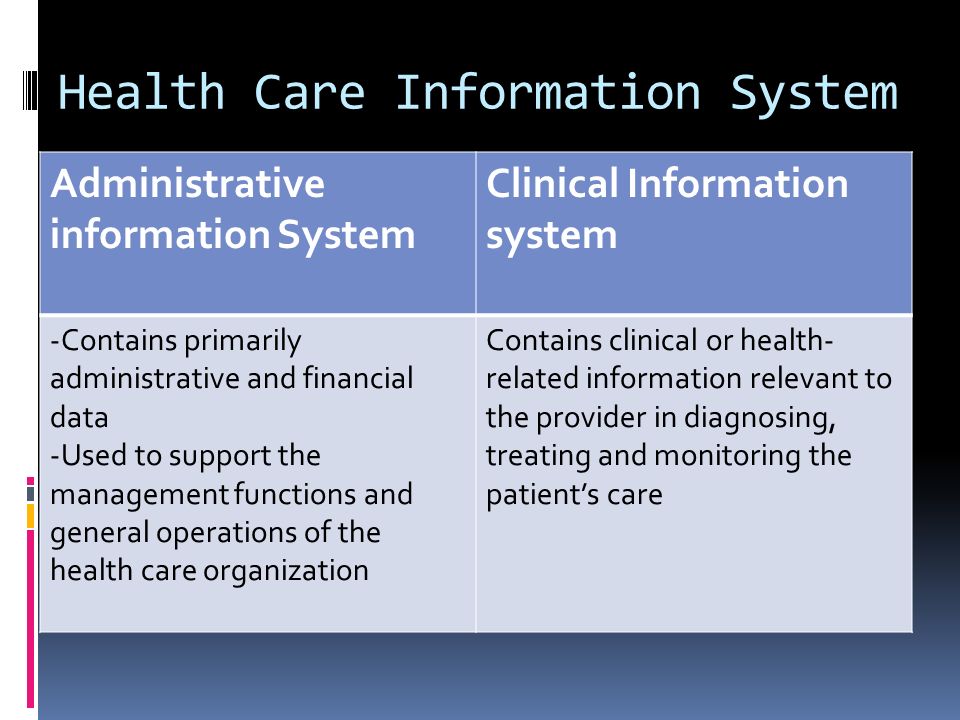Health care systems rely on administrative information systems to manage the movement of people and supplies. They also provide reports for managerial oversight and research.
These systems can be as simple as a paper form that doctors use to record patient health histories or as sophisticated as an electronic medical records system that is connected to a database.
Patient portals
Patient portals allow patients to access their medical data from anywhere at any time. They can view test results, schedule appointments, and contact physicians through secure messaging. These features can help to improve medical practices in many ways. Patients are less likely to miss appointments, and doctors can better manage their time.
Patients can also use the portal to submit forms and pay their bills online. This can save front-desk staff time and money. Patients can even reschedule or cancel their appointments through the portal, which can help to reduce no-shows and free up time for more patients per day.
Another benefit of patient portals is that they can send clinical summaries within three business days of their office visits. This is a requirement under Meaningful Use, and patients can receive their summaries via the portal rather than waiting for them to arrive in the mail.
Despite these benefits, some people don’t use portals. This is often because of security concerns, low health literacy, or lack of Internet access. Some communities, particularly in rural areas and lower-income neighborhoods, don’t have the technology to access patient portals. As a result, these patients can be alienated from their providers and may not feel supported by their healthcare teams. To increase patient portal use, doctors need to educate their patients on the importance of logging on securely and avoiding social engineering attacks.
Master patient index (MPI)
The master patient index (MPI) is the key to accurate patient identification and streamlined data management. It is also crucial for patient safety and efficient healthcare delivery. A well-designed MPI can significantly reduce duplicate records, improve patient tracking, and support quality improvement initiatives. In addition, it can also lower the cost of managing medical data.
A MPI is a database that contains information about patients across multiple systems within a health care organization. It consists of patient demographic information, unique identifiers, and cross-referencing mechanisms. The unique identifiers can be either system-generated or patient-specific. The information in the MPI can then be used to link and retrieve records from various systems. This allows healthcare providers to have a single view of the patient’s health history. A MPI is also referred to as an enterprise master patient index (EMPI).
An EMPI is not a strategy for managing patient identities, but an infrastructure that makes it possible to use identity-management strategies. EMPIs utilize an advanced matching algorithm to identify similar records and assign unique identifiers for patients. The match engine can be deterministic, probabilistic, or naturalistic. In addition, it may employ a scrubbing process that standardizes and validates data. It can also handle abbreviations and variants to ensure accuracy and consistency. It can also provide a private voluntary identifier and a public universal identifier.
Electronic health record (EHR)
EHRs digitalize patient medical records. They also offer an array of benefits, including streamlining workflows and improving patient-provider interactions. These systems can also help improve healthcare outcomes and reduce costs. The healthcare industry has seen a significant rise in EHR adoption in recent years. This is largely due to the HITECH Act, which subsidizes EHR implementation in medical practices.
A patient’s EHR contains all of the information a physician would find in a paper chart, such as past medical history, vital signs, progress notes, diagnoses, medications, immunization dates and lab data. Some systems are able to import information from personal wellness devices, which increases the breadth of clinical data available for decision-making.
The interoperability of EHRs has been a key challenge for the healthcare industry. The different software systems that support EHRs are not always compatible, and the transfer of data is often unreliable. However, the healthcare industry is working to fix this problem.
The use of EHRs in healthcare is transforming the way medical professionals work. Many of them are now relying on EHRs to document their patients’ health, track their treatment and deliver personalized care. In addition, they are using EHRs to identify and schedule patients for preventative screenings or follow-up visits. The technology has also enabled researchers to analyze large volumes of data to develop novel treatments and technologies.
Revenue cycle management (RCM)
For any healthcare organization, revenue cycle management (RCM) is a crucial function. It optimizes every step of the customer billing and payment process to ensure that healthcare organizations receive payments for their services. It can also reduce error-related claim denials and bad debt losses, thereby improving patient satisfaction. RCM also enables hospitals and healthcare practices to streamline processes, decrease administrative work and maximize their earnings.
One of the most important aspects of RCM is insurance verification, which helps to confirm patients’ coverage before their appointments. This ensures that the claims submitted will be honored by the insurer, avoiding rejected claims and unanticipated expenses for patients. Another key aspect is clinical documentation, which consists of clear and concise medical records that reflect diagnosis, treatment, medications, procedures, and other services provided to the patient. This ensures that the claims are processed quickly and efficiently.
Another advantage of RCM is its role in preventing healthcare fraud and abuse, which cost the industry billions of dollars each year and cause significant reputational damage to providers. By focusing on accurate data collection, coding, and processing of claims, RCM significantly lowers the risk of fraudulent activity. It also ensures that healthcare organizations are adhering to the complex regulatory guidelines and billing requirements set by government agencies and insurance companies. This avoids claims denials and other penalties and frees up staff time to focus on patients.






More Stories
Easy Healthy Cooking Recipes For Beginners
Quick Dinner Ideas For Two Healthy
Types of Digital Health Technologies